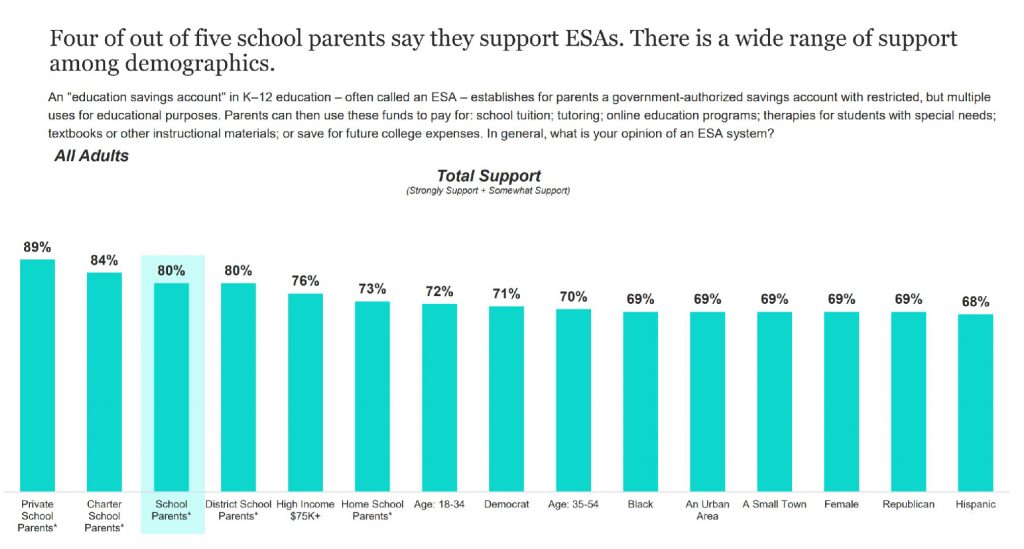EdChoice Public Opinion Tracker: Top Takeaways February 2021
With most schools now more than halfway through this admittedly bizarre school year, it’s time for us to check in with another update of our monthly poll tracking poll.
You can browse the full reports as well as our national and state dashboards, which illustrate public opinion on various educational issues at the beginning of the new year, at the EdChoice Public Opinion Tracker.
Each month, Morning Consult conducts a tracking poll based on a nationally representative sample of adults 18 years and older (N = 2,200, in the field February 10-17). With additional sampling, we obtained responses from 1,100 parents of school-aged children so we can report more reliable information about parent subgroups by demographic.
In a nutshell: February’s results showcase slightly more optimism about K-12 education than in January, suggesting the downward pattern through the fall has turned around. Parents are more bullish on their children’s development, and a slight majority say they would be comfortable putting their children in a classroom setting. Overall openness to receiving a COVID-19 vaccine rose; however, so did statements that the pandemic is “very disruptive” to Americans’ communities. After much fluctuation, strong support for homeschooling in light of the pandemic returned to its March levels, and parents continue to show interest in at least some home-based education over the long term. Positivity toward school choice policies remains high and even increased among most demographics, especially for charter schools.
1. Optimism about the direction of education ticked upward in February. The share of Americans who feel K-12 education is moving in the right direction was the highest since October, though still below levels at the beginning of the pandemic. National K-12 education, always showing the lowest level of optimism relative to local school districts and statewide education, had the most significant jump.
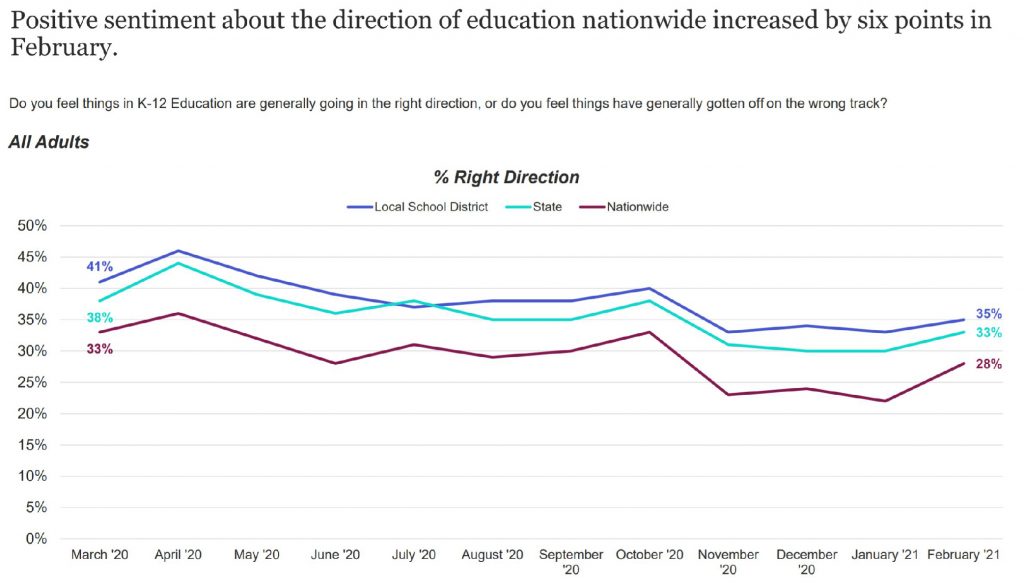
2. More Americans perceive COVID-19 as “very disruptive” than they did last month. While January saw the first drop in feelings of disruption due to the pandemic since the beginning of the school year, the trend did not last long. The share of Americans reporting COVID-19 has been “very disruptive” to their communities, family and household routines, and personal routines all rose since January. Notably, the “very disruptive” responses regarding American communities were the highest since June.
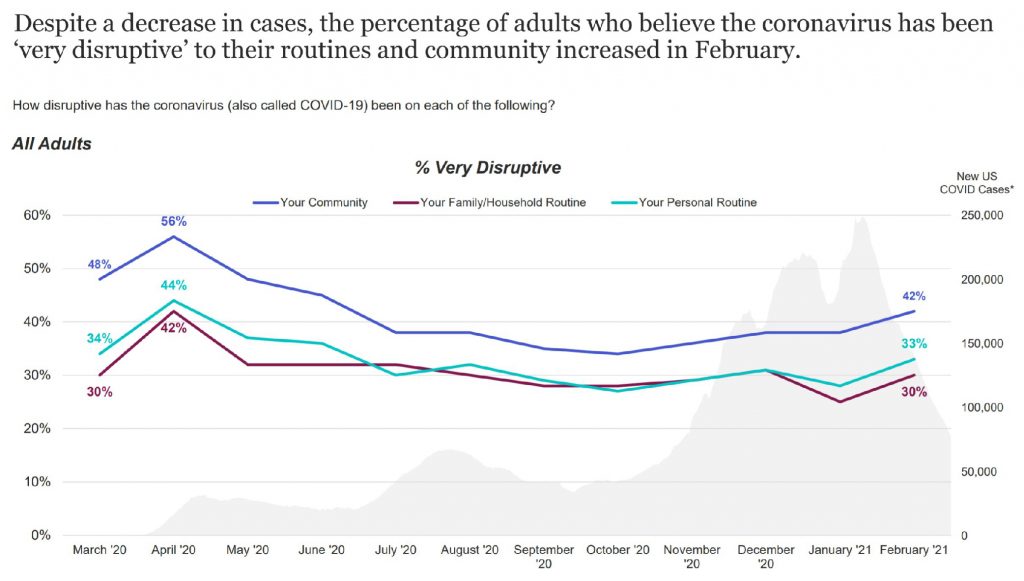
3. Americans are more approving than disapproving of public officials’ roles in school closures and re-openings, but many are unaware of their influence. Americans saying they approve of public officials’ role in school closures exceeds those that disapprove, a result that holds for each of the six types of officials posed to them. State public health officials received the highest total approval rating at 51 percent, followed by local school boards at 49 percent. A close third was state governors at 48 percent, and the Biden Administration ranked fourth at 47 percent.
Teachers unions ranked the lowest, with local teachers unions reaching 44 percent total approval and national teachers unions hitting 41 percent. However, the two teachers union categories also have the lowest total disapproval ratings at 24 percent and 27 percent, respectively.
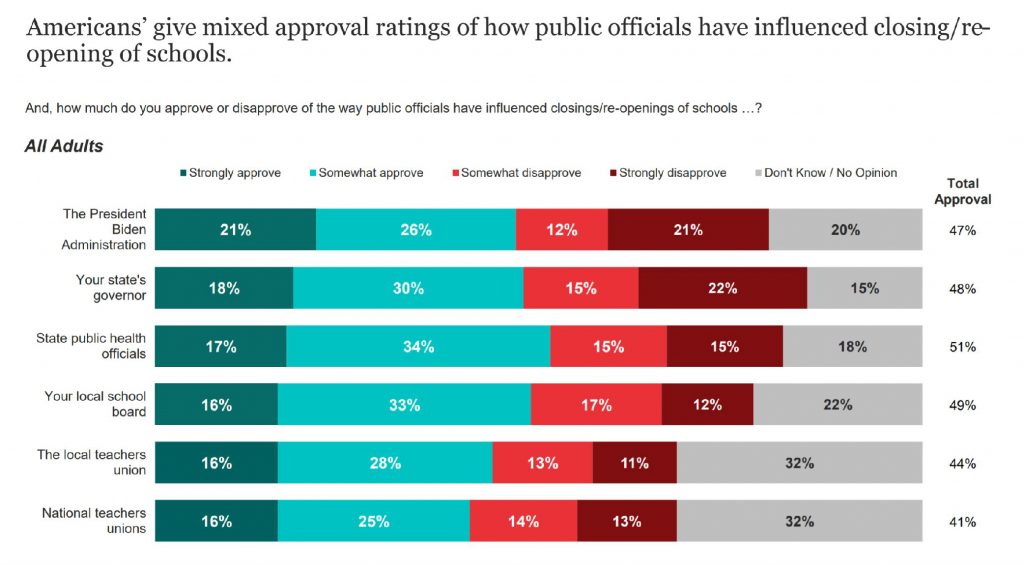
As a brief look at the above chart would suggest, teachers unions have the lowest approval and disapproval ratings because nearly one in three responded “don’t know/no opinion,” a substantially higher number than those for the other four categories. That being said, the “don’t know/no opinion” response was notably high for every public official category.
4. Positivity toward the federal government’s response to the pandemic saw a sizable increase in February, though overall sentiment about the federal government remains more negative than positive. Since June, we have asked Americans how they rate state and federal government responses to the COVID-19 outbreak, as well as those of schools and school districts. Positivity has fallen across the board since then, though the decline has stabilized somewhat since November. Each public institution saw a decline in positive ratings between December and January. Only the federal government saw a significant rise between January and February.
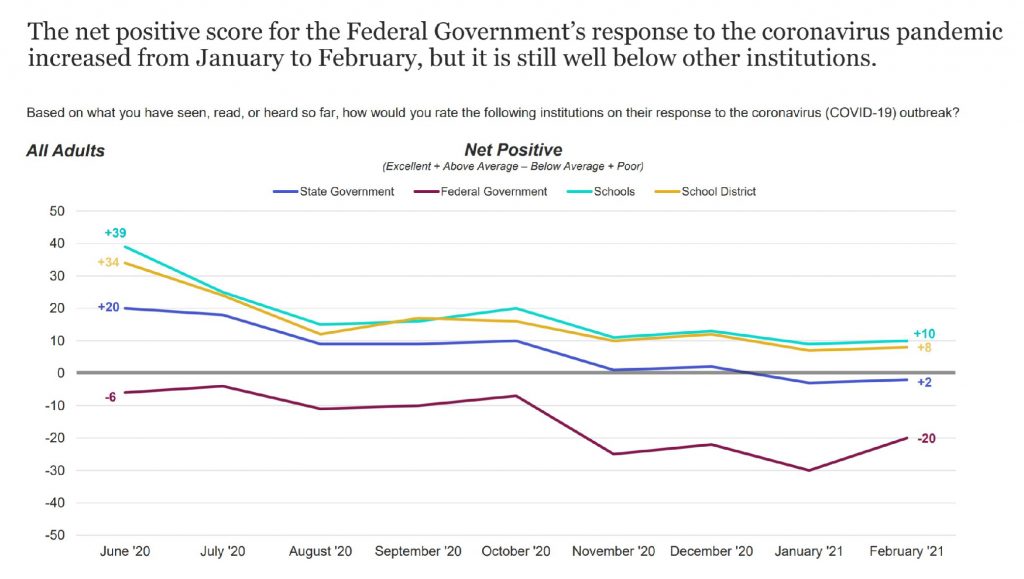
5. Most demographics were slightly more likely to say they would get a COVID-19 vaccine when available. One of the most striking findings of the January poll was the significant jumps in people who said they would agree to receive a COVID-19 vaccine. February’s poll saw increases in most demographics, though relatively more marginal than last month. Generation X, Democrats, and Boomers were the groups that saw the largest gains. Unlike January, some demographics also saw declines in openness to vaccines. Generation Z, Millennials, and residents of small towns had the lowest gaps in openness to vaccines relative to January.
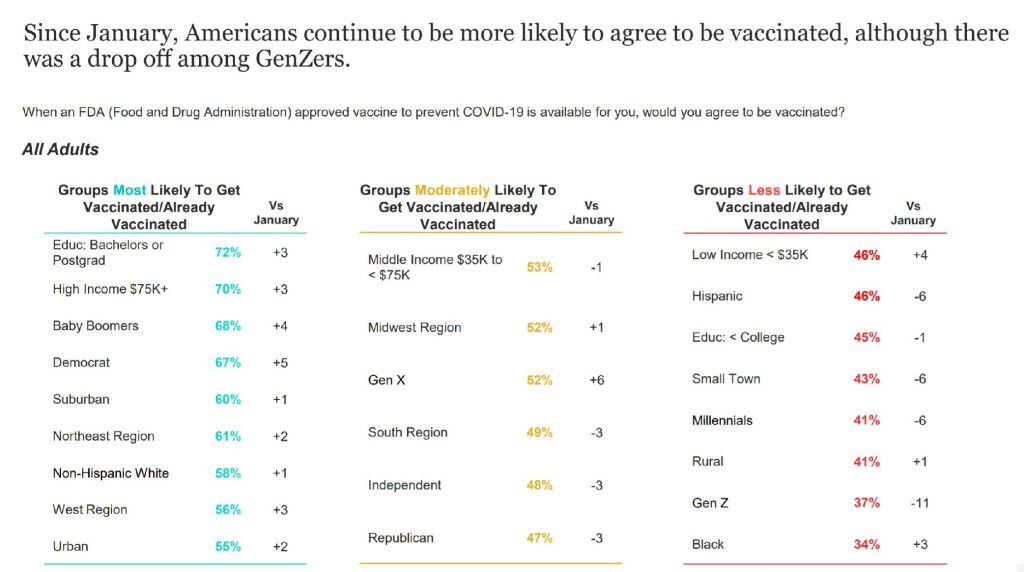
6. Parents continue to be more comfortable with their children returning to school, but they do not necessarily think school is safe. For the first time since October, half of parents of school-aged children said they were very or somewhat comfortable with their children returning to school “right now.” This result continues a trend toward comfortableness with in-person education that began in December. Parents were most comfortable with in-person education in September.
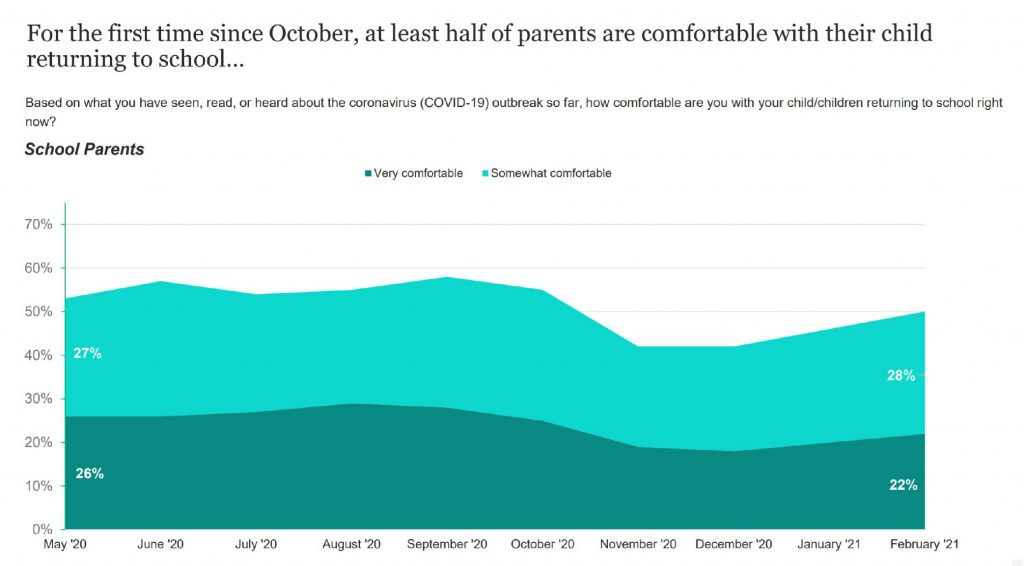
However, when parents were asked when they thought COVID-19 would be contained enough such that in-person education was safe, only 12 percent answered “February.” In fact, just 34 percent of parents said the pandemic situation would be safe enough before the summer. One in five parents thought in-person education would be safe at the beginning of the next academic year, while 30 percent said the pandemic would keep classrooms unsafe even later than that.
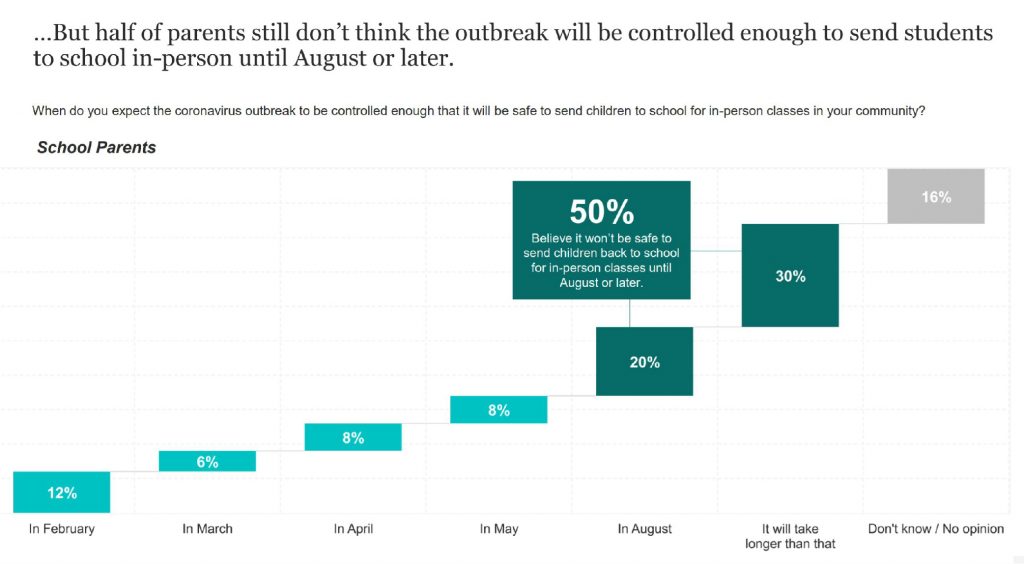
7. Favorability toward homeschooling ticked back upward. After a sudden drop in January, the share of school parents with a much more favorable opinion of homeschooling due to the pandemic has reverted to its level at the beginning of the pandemic. Total favorability climbed for the first time since November.
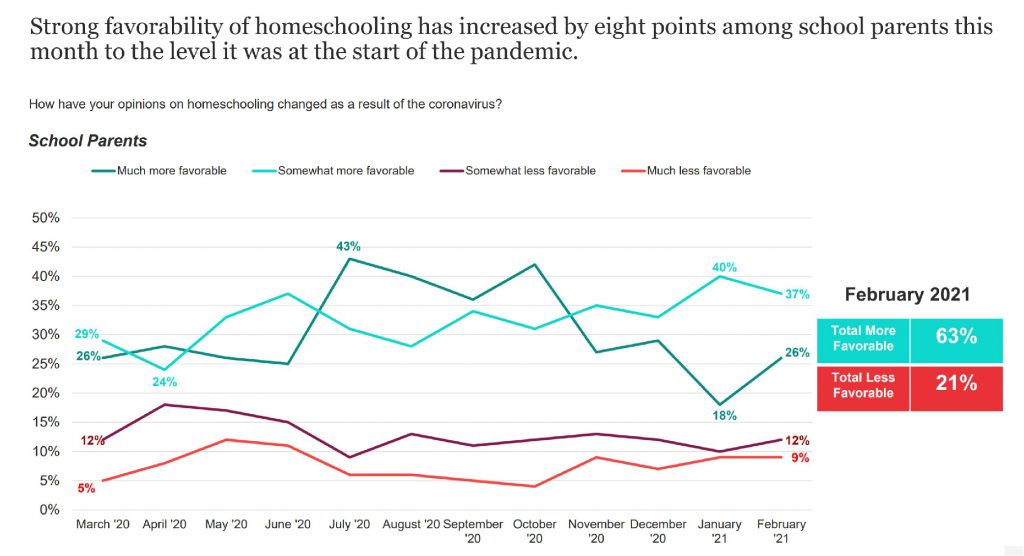
8. Parents indicate substantial long-term interest in hybrid education. Among all school parents, roughly two in five report their children are learning entirely online, while the remaining three in five say their children are participating in at least some in-person education. Over one-third of parents say their children are participating in a mix of in-person and online education, and that option seems appealing to families even after the pandemic—45 percent would most prefer their children learn 1-4 days at home and spend the remaining weekday(s) in a learning environment outside the home. These numbers are essentially unchanged from January. This is an important trend we’ll continue watching to figure out how parents see the future of education.
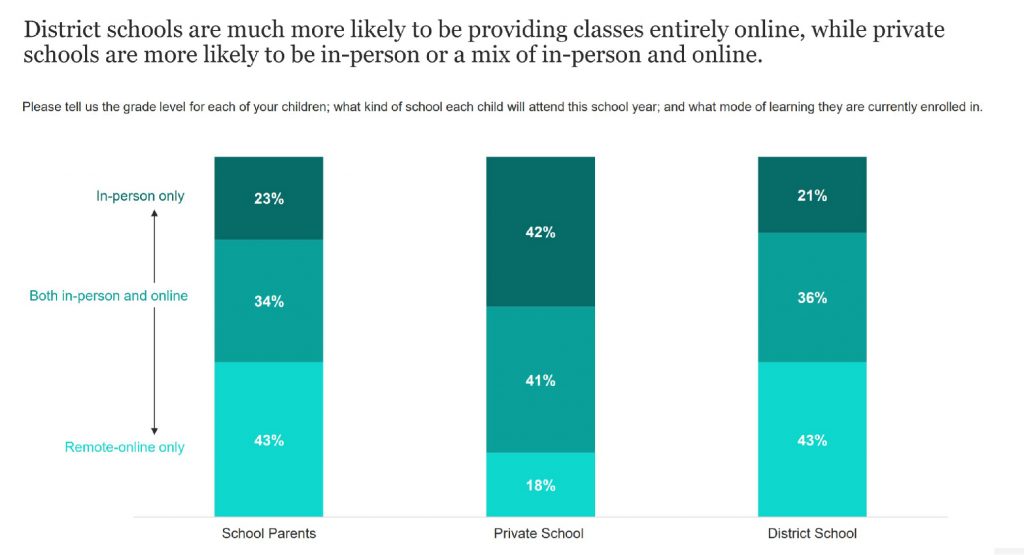
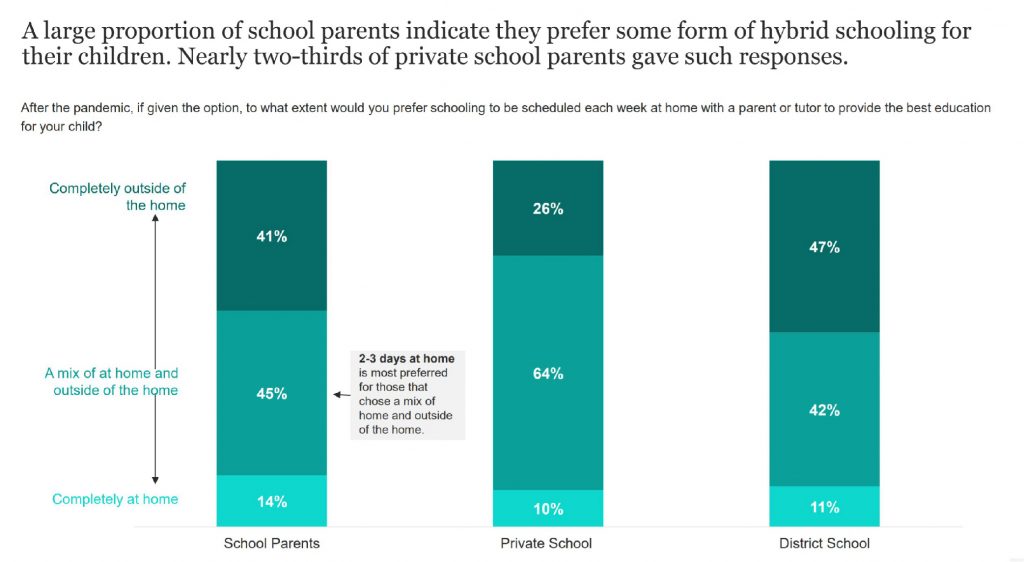
9. Parents are more optimistic about their children’s academic, emotional, and social development than they were in January. Among all school parents, the share saying their children’s emotional development has progressed “very well” this school year was 25 percent, a four-point jump compared to January. This increase is due especially to optimism from private school parents, among whom 44 percent reported their children were developing very well, compared to 35 percent in January.
Highly positive responses regarding children’s social development increased from 22 percent to 27 percent, among all school parents. As was the case with emotional development, the main driver for this jump was private school parents, half of whom reported their children’s social development was progressing “very well.” That is a 12-point increase over their January total.
Private school parents also were notably more optimistic about their children’s academic development, with the share saying their children were progressing very well increasing from 39 percent to 48 percent.
Although the gains were not as significant as those of private school parents, district school parents also were more likely to say their children are progressing very well academically (+ 5%), emotionally (+ 3%), and socially (+ 5%).
Homeschooling parents were the source of the only decline in strong positivity about their children’s development. While 51 percent of homeschooling parents said their children were progressing very well academically in January, just 33 percent said so in February.
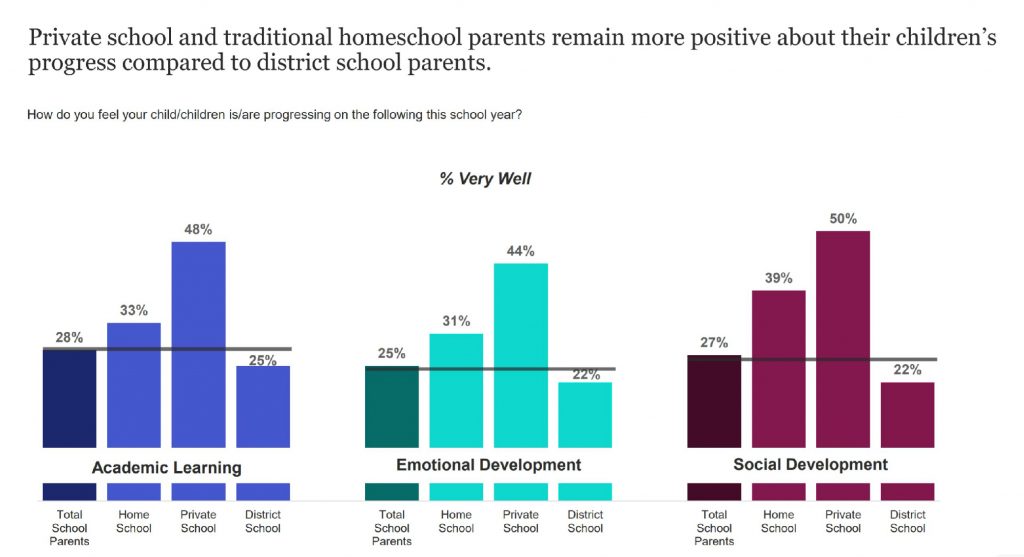
10. Support for school choice policies increased slightly across most demographic groups. Total support for charter schools has increased every month since July, reaching 68 percent in February. Support from parents of school-aged children is especially high at 75 percent. Other demographic groups disproportionately in favor of charter schools (relative to the total adult population) include Republicans (75%), Hispanics (74%), and young adults (72%).
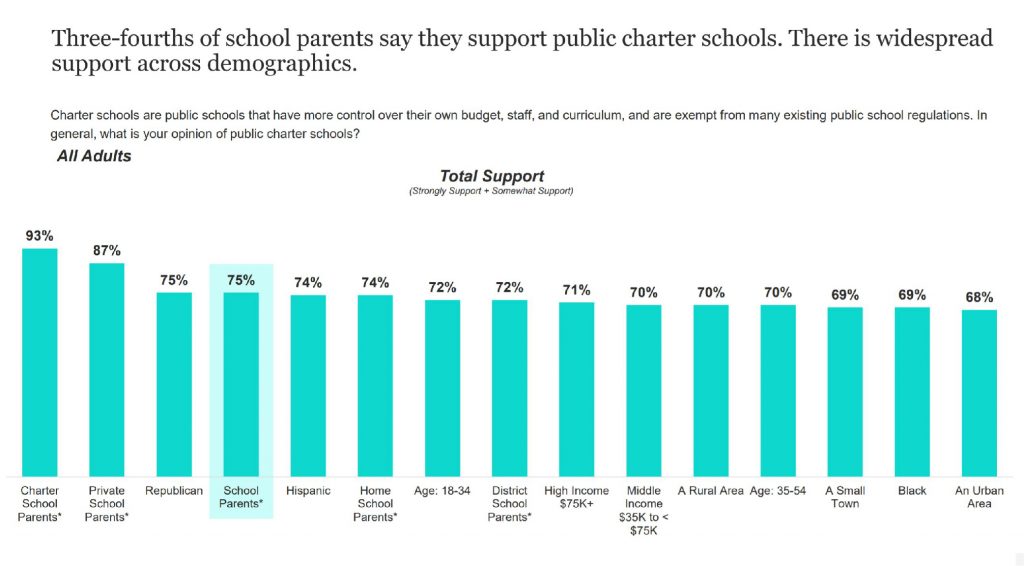
Since January, support for charter schools increased among all demographic groups except for Northeasterners. Southerners and Generation Z saw the highest gains in support relative to January.

Nearly three in four parents of school-aged children somewhat or strongly support vouchers. Support increased during the early days of the pandemic and has roughly maintained that increased level since then.
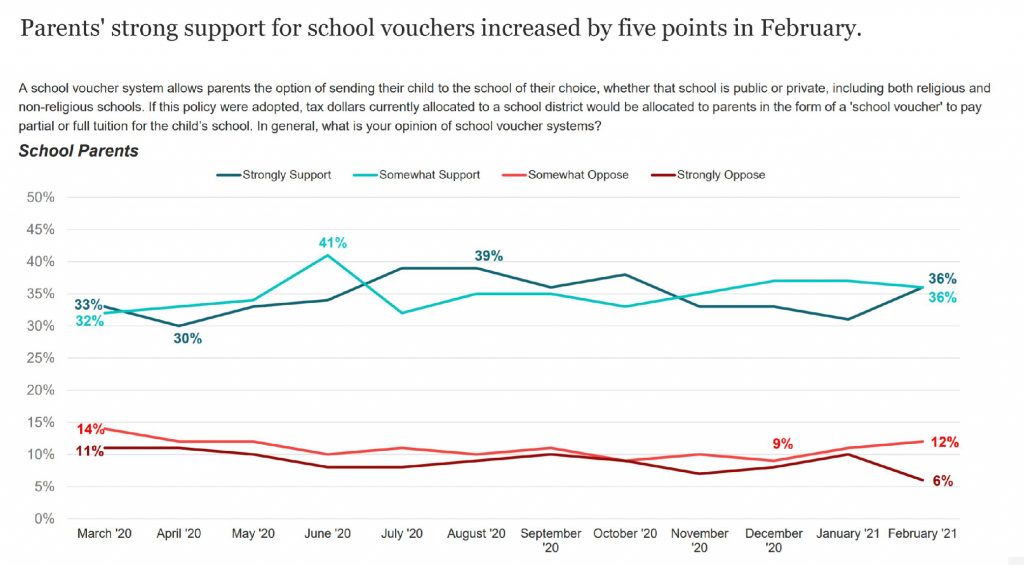
After a 10-point jump from January, Blacks are the demographic most supportive of school vouchers, surpassing Republicans and young adults. Americans from rural areas, small towns, and the Midwest all saw jumps in support as well.
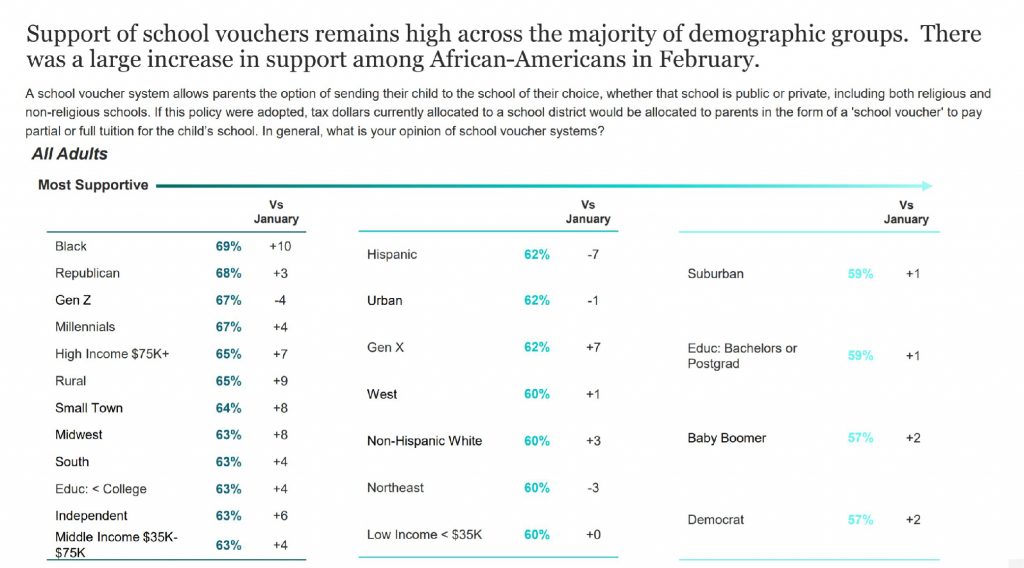
More than two out of three adults and four out of five school parents support ESAs. Support has been relatively consistent since the start of the pandemic.
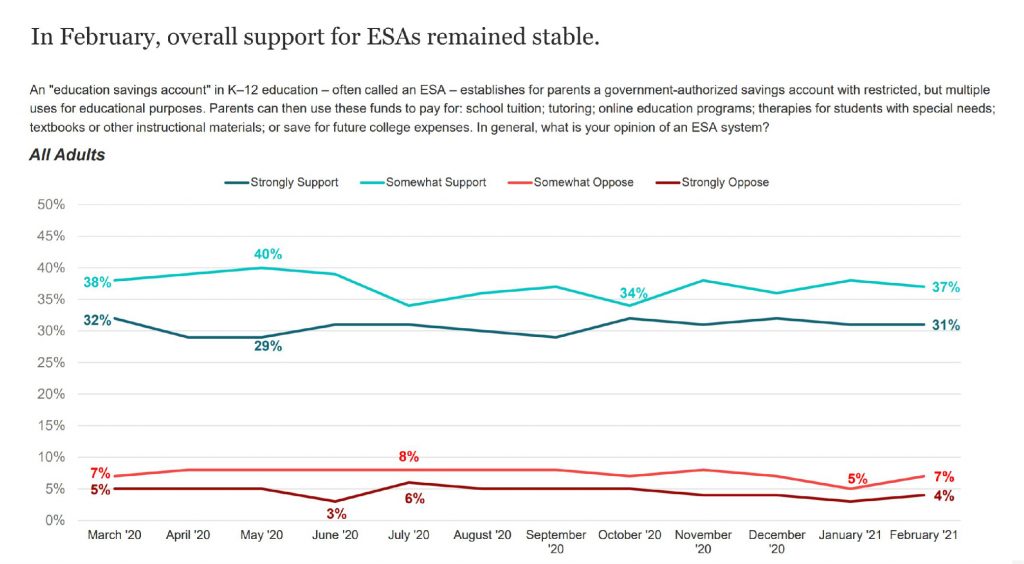
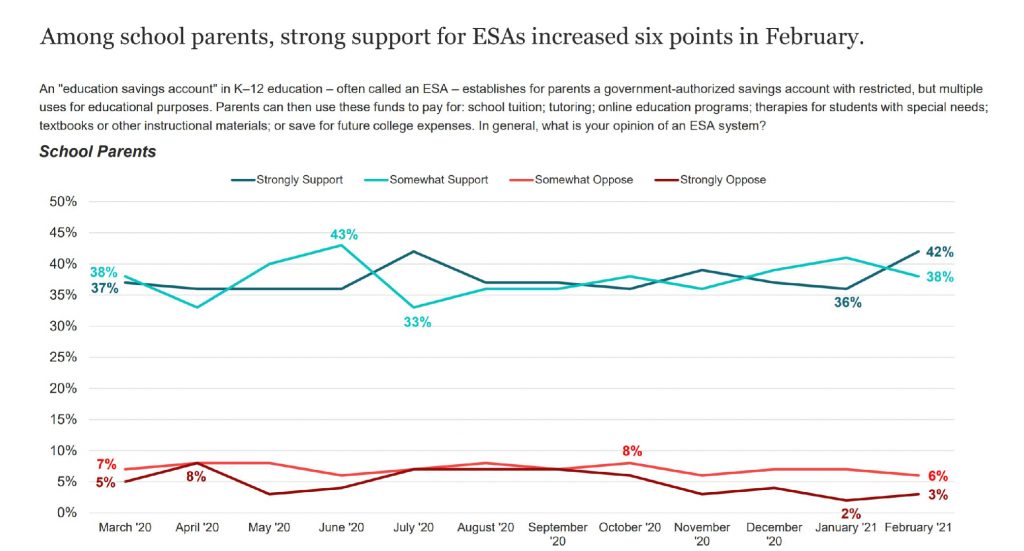
Young adults (72%) and Democrats (71%) are the two non-parent demographics most supportive of ESAs. Middle-aged adults (70%), Blacks (69%), and urbanites (69%) also indicated disproportionately high levels of support relative to the general adult population.
